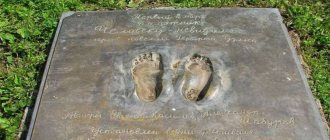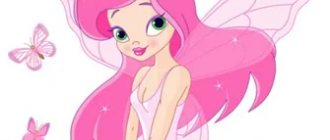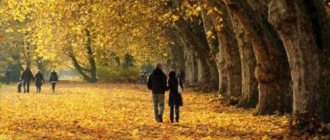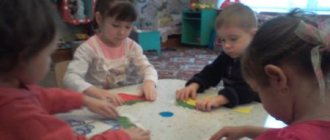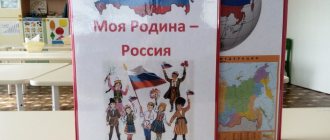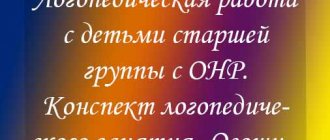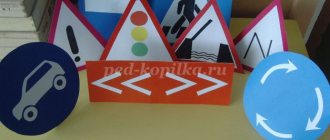Summary of a lesson on extracurricular activities on the topic: “Russia is my Motherland”
State Budgetary Educational Institution "PEDAGOGICAL COLLEGE"
Lesson notes on extracurricular activities
(spiritual and moral direction, patriotic education) on the topic:
“Russia is my Motherland”
Prepared by: student of school group 33 Heydebrecht Elina Leonardovna
Chernyakhovsk, 2021
Methodological development of extracurricular activities
“Russia is my Motherland”
Target:
creating favorable conditions for nurturing patriotic feelings and love for one’s country.
Tasks:
Educational:
clarify and expand children’s understanding of Russia; give children an understanding of the history and heroic heritage of our country.
Educational:
form coherent speech, correctly use grammatical forms in speech; teach to form phrases.
Educational:
cultivate love for the Motherland, Fatherland; cultivate patriotic feelings.
Lesson form:
conversation with game elements.
Equipment:
World map; globe; illustrations depicting state symbols of Russia (coat of arms, flag); coats of arms of other countries and cities; portrait of the president and governor of the Volgograd region; coins and objects depicting various coats of arms; children’s drawings on the topic: “My family’s coat of arms” (created in the process of work), “My favorite city”
Children's age:
10-13 years
Progress of the lesson
Video about the Motherland, opening of the topic.
U:
Guys, you and I talked so much about our Motherland, read stories and poems about it, drew pictures about the country in which we live.
Today I
invite you to test your knowledge, see how well we know our Motherland, maybe today someone will learn something new for themselves. Are you ready to go on a difficult journey and test your knowledge?
So, go ahead...
Station 1 - “My Country Address”
Teacher:
We live in a huge, beautiful country. This is a big Motherland. Like a person, a country has a name. What is the name of our country? Can you say her name? (Russia)
One of the guys reads the poem “Our Home”, which he had learned in advance:
You won't find it on the world map
The house where you live.
And even native streets
You won't find the one on the map
But you and I will always find
Our country, our common home.
Next, the teacher shows the territory of Russia on the world map and once again clarifies the name of the country, showing the children that the country is very large, vast, it has many lakes, seas and rivers. The continent on which we live is the largest on Earth, and it is called Eurasia.
U: Guys, what do we call the people who live in our country? (Russians)
T: Next, the teacher invites the children to find their country on the globe.
Guys, who runs such a big country? (the president). The teacher clarifies that it is difficult to govern a huge country alone, so the president is helped by the State Duma and governors of various regions. The teacher shows portraits of the president of the country and the governor of the Volgograd region. I wonder how these people became president or governor? (the teacher clarifies that they were chosen by the people).
Station No. 2 “Signs and Symbols”
U:
Our second station is called “Signs and Symbols”. Pay attention to these illustrations, they have something in common. Who knows what is depicted on them? (coat of arms).
These are the coats of arms of different countries. The coat of arms unites people living in one country and is a distinctive sign of the state. They tried to depict something very important for the country. Each symbol and color on the coat of arms has its own meaning. Let's find the coat of arms of our country and look at it more closely...
The child reads out the previously learned poem “Coat of Arms of Russia”:
Russia has a majestic
The coat of arms has a double-headed eagle,
So that to the west, to the east
He could watch right away
He is strong, wise and proud,
He is Russia's free spirit.
The teacher and the children decipher the symbols and colors depicted on our coat of arms:
The eagle is the king bird, it is a big strong bird. The color gold is a symbol of the sun. Vast Russia is located in both Europe and Asia. Therefore, one head of the eagle is turned to the East, the other to the West, with a single body - a single government. The eagle's chest is decorated with a shield depicting a rider fighting a serpent (dragon), which indicates the constant struggle of good over evil. Three crowns above a double-headed eagle signify the unified bond of peoples. The scepter and the orb in the clutches of the eagle are royal religions that serve as the embodiment of state order and loyalty to the law. So, the coat of arms of Russia is a dark red shield with a golden double-headed eagle on it.
Next, we consider other coats of arms together. Find similarities and differences between our coat of arms and other coats of arms.
U:
In addition to the coat of arms, our country has another state symbol, which, like the coat of arms, distinguishes us from other countries. Who can tell me what this symbol is? (flag)
— What does the flag of our country look like? What do we compare these colors to? (children's answers).
The child reads out the previously learned poem “Flag of Russia”:
White color - birch.
Blue is the color of the sky.
Red stripe -
Sunny dawn.
Next, the teacher shows the children flags of other countries that have the same colors as our flag (for example: Czech Republic, Yugoslavia, Slovenia, Croatia).
Station No. 3 "Plyasovaya"
The teacher invites the children to remember another distinctive feature of Russia from other countries. These are Russian folk dances. We all remember together the Russian people's movements. Then, the children are invited to dance a Russian folk dance to the music (you can take the dance that the children learned in music classes).
Station No. 5 “My Family”
Teacher:
This station is called family station (draws children's attention to the photographs).
— How can you use one word to describe everyone we see in one photograph? (family).
- What other words can you call members of the same family? (family, relatives).
— Today we told you that countries and cities have their own distinctive signs - coats of arms. But a family can also have a coat of arms. A family is also a small, friendly state that has its own interests, laws, traditions, and activities. Based on this, the children try to draw their family’s coat of arms on separate sheets of paper. As a result, everyone together completes the map of the city of Zhirnovsk with family coats of arms. As a result, the exhibition “Our city is our small homeland” is on the board.
Station No. 6 "Finish"
- Our route is over. In conclusion, I suggest you play a little and at the same time check what you remember from our difficult route today. I suggest you answer the following questions.
The guys fill out pre-prepared cards with questions and carry out mutual checks:
Question
Answer
Checked by student __________________
1.What is the name of the country in which you and I live?____________________
2.What is the name of our city?_________________________________________
3.What street do you live on?_________________________________________
4.What is depicted on the Russian coat of arms?________________________________
5.What colors are present on the Russian flag?_______________________
6.What continent do we live on?________________________________________________
7.Why does a country need a flag?________________________________________________
8.Who rules our country?_____________________________________________
9.Name the capital of our state?_________________________________
10.Explain the proverb “Everyone loves his own side” or “The native side is the mother, and the stranger’s side is the stepmother.”_______________________________________________
Bottom line. Reflection
- So our lesson about our small Motherland has ended.
Did you like it? What did you like most? (The guys take turns sticking tokens (red - I liked it, blue - it made me think, yellow - I don’t know) and answer the question)
You can end the lesson with the poem “My Motherland”:
Great land, beloved land,
Where we were born and live.
We are the bright homeland, we are the sweet homeland,
We call it our Motherland.
